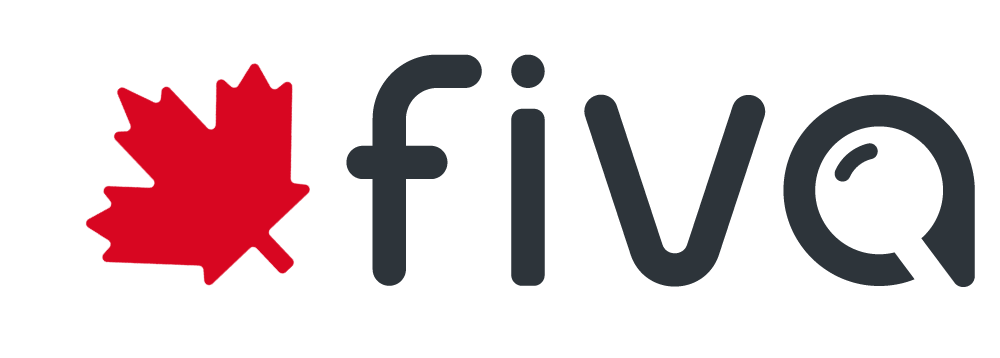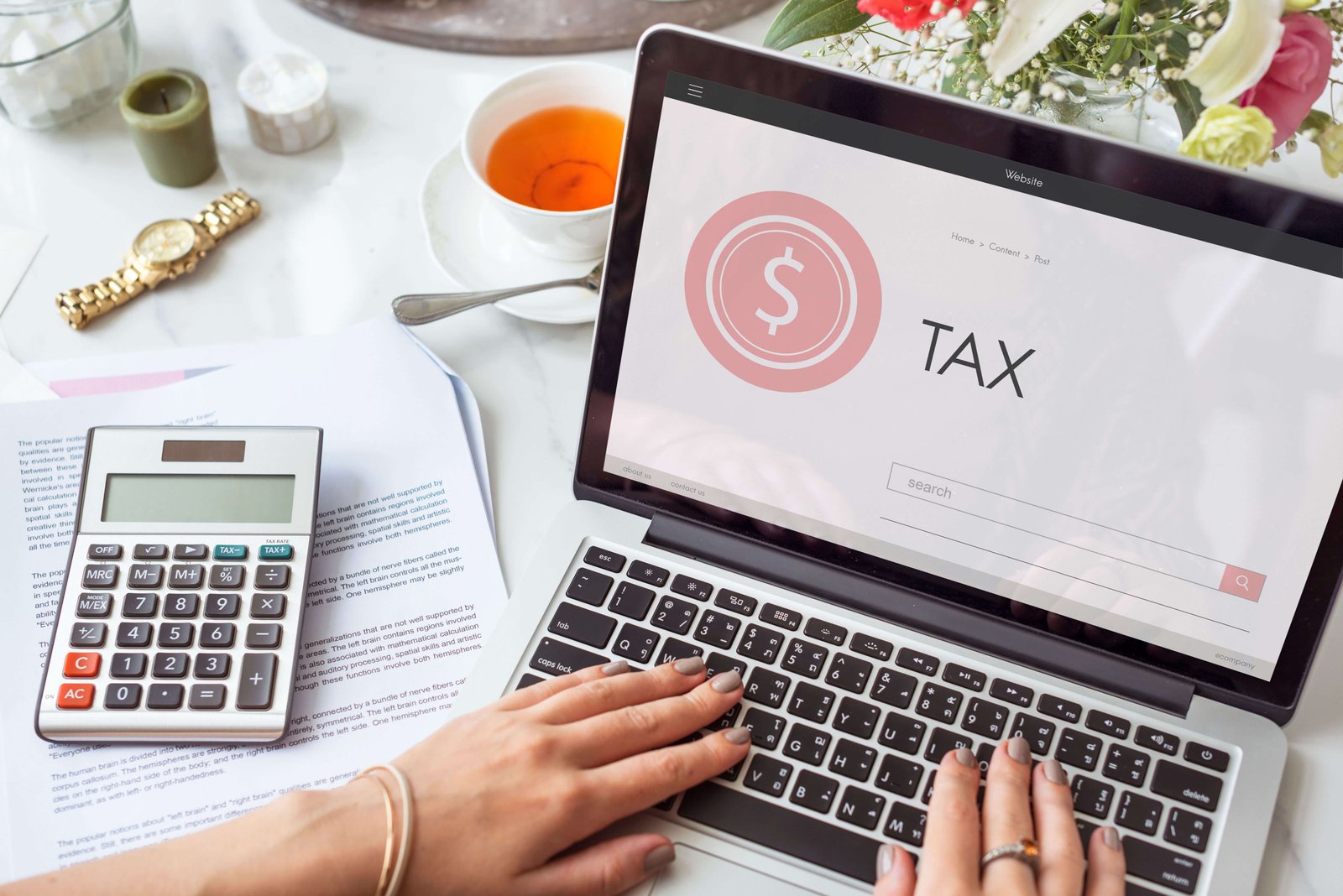Guide to Tax-Saving Hacks for Canadians in 2025
Tax season is here, and guess what? It doesn’t have to be a dreaded time of year. This friendly guide is for Canadian taxpayers who want to save some money, avoid last-minute panic, and maybe even crack a smile while doing taxes. We’ll walk you through simple tax-saving life hacks – from key deadlines to nifty deductions and credits – all explained in easy terms. We’ll even point you to helpful resources (like Fiva.ca for finding tax-prep services) along the way. So, grab a coffee and let’s make tax time in 2025 as smooth as possible.
1. Get Organized Early
Why it matters: Imagine it’s April 29 and you’re frantically searching for a missing T4 slip under your couch cushions. Not fun, right? Avoid the last-minute scramble by getting organized early. When you have all your documents in order, you’ll file faster and catch more deductions – which can mean a bigger refund or a smaller bill.
How to do it: Dedicate a folder (physical or digital) for all your tax documents. Drop in every T4 (employment income slip), T5 (investment income slip), charitable donation receipt, medical bill, and any other tax-related paperwork you get throughout the year. Some people use a trusty shoebox, others go high-tech with scanning apps – whatever works for you! The key is to have everything in one place. Come tax time, you’ll be giving past-you a high five for being so organized.
-
Tip: Keep a checklist of common documents (T4s, RRSP contribution receipts, medical and childcare receipts, etc.) and tick them off as you add them to your folder. This way, you won’t accidentally forget the slip from that summer job or the receipt for your new glasses.
-
Relatable hack: Got a habit of losing receipts? Snap a photo of each important receipt with your phone and back it up to a folder in the cloud. No more faded, illegible receipts or panic when you spill coffee on them.
Being organized also means you can maximize your deductions and credits because you’ll have all the supporting documents handy. It’s a simple hack, but it can save you both money and sanity. Future you will be grateful!
2. Mark Your Calendar with Key Tax Dates
Procrastination is a Canadian taxpayer’s worst enemy. One of the easiest ways to avoid late fees and rushed filings is to jot down important tax deadlines in your calendar (yes, in bold red ink or with phone alerts!). Here are the big dates for 2025 you absolutely don’t want to miss:
-
RRSP Contribution Deadline: March 1, 2025 (extended to Monday, March 3, 2025, since March 1 falls on a weekend). This is the last day to contribute to your RRSP and have it count toward your 2024 tax year. Translation: contribute by this date to potentially score a bigger refund by reducing your 2024 taxable income. It’s like a sale for your taxes – don’t miss it!
-
Tax Filing Deadline (most people): April 30, 2025. This is the big one. Your income tax return for 2024 is due on this date. File by April 30 to avoid late-filing penalties (which can be pretty hefty, around 5% of any balance owing, plus interest – ouch!). If you’re getting a refund, filing by the deadline means getting your money sooner. And who doesn’t want that?
-
Tax Filing Deadline for Self-Employed: June 15, 2025 (pushed to June 16, 2025, because the 15th is a Sunday). Good news: if you or your spouse/common-law partner have self-employment income, you get a bit more time to file. Bad news: any tax you owe is still due by April 30, 2025. So, while you can file in June without a late-filing penalty, interest on any balance owing will still kick in from May 1. Mark both dates and plan accordingly.
Set reminders: Add these dates to your phone or wall calendar now. Maybe even set a reminder a week or two in advance of each deadline. A little nudge can save you from a last-minute race to the post office or computer. (Ever tried to e-file at 11:59 PM on April 30? Talk about adrenaline rush – we don’t recommend it!).
By keeping on top of deadlines, you’ll avoid costly penalties and stress. Plus, it feels pretty awesome to cross “submit taxes” off your to-do list before the very last minute. Go you!
3. Boost Your RRSP (Your Tax Refund’s Best Friend)
If there’s one tax hack nearly every Canadian has heard of, it’s the RRSP (Registered Retirement Savings Plan) – and for good reason. Contributing to an RRSP is like giving yourself a gift during tax season. Every dollar you contribute (up to your limit) can reduce your taxable income for the year, which often means a lower tax bill or a bigger refund.
How it works: Say you had a good year at work and earned more than usual in 2024. Putting some of that extra income into an RRSP by the deadline (remember: March 3, 2025 for the 2024 tax year) can shrink the slice of your income that the tax man gets to tax. It’s completely legal and encouraged by the government – after all, you’re saving for your retirement. Come spring 2025, you might find that instead of owing money, you’ll get a nice cheque (or direct deposit) from the CRA. Hello, refund! (Pro tip: consider popping that refund into a TFSA or back into your RRSP for next year – your future self will thank you again.)
Know your limit: In early 2025, check your RRSP contribution room on your CRA My Account or on the notice of assessment from last year. You can contribute 18% of your previous year’s earned income up to a maximum (plus any unused room from prior years). For example, if you made $60,000 in 2023, you could contribute up to $10,800 for 2024 (18% of $60k), subject to the annual cap. The maximum annual RRSP contribution for 2024 (to be contributed by March 2025) is $31,560 (this number changes year to year). Not everyone can max it out, and that’s okay – contribute what you can, even if it’s a small amount. It still helps.
Spousal RRSP for a double win: If you’re planning ahead for retirement and you have a partner, consider a spousal RRSP. This is where one spouse contributes to the other’s RRSP. It’s a nifty income-splitting strategy: the higher-earning spouse gets the immediate tax deduction, and down the road, withdrawals can be taxed in the other spouse’s hands (ideally at a lower rate). This is a more advanced hack, but worth mentioning for those thinking long-term.
Bottom line: RRSPs are a tax hack that not only save you money now but also set you up for later. It’s like planting a money tree that gives you shade in April (tax relief) and fruit in retirement (your savings). Win-win!
4. Claim All Your Credits and Deductions (Don’t Leave Money on the Table)
Credits and deductions are the secret sauce of tax savings. They’re basically the government’s way of saying, “Hey, we’ll give you a break for doing certain things or for certain life situations.” Make sure you take full advantage of them! Here are some common ones to look out for:
-
Child Care Expenses: Did you pay for daycare, a nanny, or day camps so you could work or study? Keep those receipts! The lower-income spouse can usually deduct these costs and it can amount to thousands of dollars off your taxable income. Kids are expensive, but at least the tax man offers some relief for that.
-
Tuition and Education Credits: If you’re a student or you have a child in college/university, tuition can provide a hefty non-refundable tax credit. Students often don’t earn enough to use all of it, but the good news is they can carry it forward or even transfer a portion to a parent/spouse. So, don’t let those T2202 tuition slips gather dust – use them!
-
Charitable Donations: Canadians are a generous bunch. If you donated to any registered charities, make sure to claim the donations tax credit. You get a federal credit of 15% on the first $200 of donations, and 29% (or even 33% for high income) on the amount above $200, plus provincial credits. Translation: your $200 donation could give you around $50 back at tax time, and larger donations give back even more per dollar. Tip: if you have a spouse, it usually makes sense for one of you to claim all the donations – you’ll hit that above-$200 higher credit faster.
-
Medical Expenses: Keep receipts for things like prescription medications, dental work, glasses, or even premiums for health insurance. There’s a threshold (around 3% of your income) you have to exceed, but if you have a lot of medical expenses, they can add up to a nice credit. You can pool medical expenses for your family on one return (usually the lower-income spouse, to clear the threshold more easily). It’s a bit of math, but could be worth it.
-
Home Buyers’ Amount: Bought your first home in 2024? Congrats! Make sure to claim the First-Time Home Buyers’ Tax Credit. It was increased recently, so now it’s worth up to $1,500 in tax relief. It’s a one-time credit, but a sweet bonus to help with those closing costs.
-
Canada Workers Benefit (CWB): This is a refundable credit for low-to-moderate income workers. The CRA will calculate it based on your income when you file. Just be sure to file your taxes – if you don’t, you’ll miss out on free money. And if you’re married/common-law, you have to file together to get it. It’s literally the government topping up your income because you worked – how nice is that?
-
GST/HST Credit & Other Benefits: Speaking of free money, don’t forget that by filing your return, you might be eligible for the GST/HST credit (paid quarterly) or provincial programs, and even the climate action incentive if your province has it. These aren’t deductions or credits you claim on the form exactly – they’re credits the government gives you if you qualify, usually based on your income and family situation. The hack here is simple: file your tax return, even if you have little or no income, because that’s the only way to get these benefits. No return, no cheque.
Maximize those credits: Always read through the tax form or tax software prompts to see what applies to you. Did you move for a job or school? You might deduct moving expenses. Pay union dues or professional fees? Those can be deductions too. The government has credits for everything from adopting a child to digital news subscriptions. You don’t need to memorize them – just take the time to go through the options when filing. It’s like a buffet: take what you’re entitled to. Leaving a credit unclaimed is just like leaving free money on the table.
One more thing – tax credits come in two flavors: non-refundable (they reduce your tax owing but won’t give you a negative tax (i.e., refund) beyond what you paid) and refundable (they can create or boost a refund even if you paid no tax). Both are great; just know that some things (like tuition or donations) only help if you have tax owing to offset, whereas others (like the GST credit or CWB) can give you cash even if you didn’t owe tax. Either way, claim ’em all!
5. Avoid Common Tax-Filing Mistakes (No Oops at the CRA)
We’re all human, and mistakes happen – especially when dealing with numbers and forms. But some mistakes can cost you money or delay your refund, so let’s try to avoid them. Here are a few common tax-filing oopsies and how to steer clear:
-
Missing Slips or Income: Forgetting a T4 or other income slip is more common than you’d think, especially if you changed jobs or had a side gig. Remember, the CRA gets copies of all your slips. If you miss one, they might reassess your return, which could mean a surprise tax bill later. Hack to avoid this: use the CRA My Account or an auto-fill service in your tax software to double-check all your slips are accounted for. It’s like having the CRA whisper in your ear what they know about your income – use it!
-
Not Keeping Receipts: If you claim deductions or credits (like those medical expenses or donations), make sure you keep the receipts for at least six years. You don’t submit them when you file, but the CRA could ask for proof later. No receipts, no deduction if they audit you. A little filing system (even that shoebox) for receipts can save you headaches if Uncle CRA comes knocking with questions.
-
Filing Late or Not at All: We get it – life gets busy and taxes might slip your mind. But filing late when you owe money can cost you a penalty of 5% of the balance owing, plus 1% for each month late. That’s money down the drain for nothing. Even if you can’t pay all your tax by April 30, still file on time to avoid the penalty, then work out a payment plan. And if you’re getting a refund, there’s really no reason to delay – that’s your money waiting. Also, not filing means you’ll miss out on those benefits like GST credit or Canada Child Benefit. So, do yourself a favor and file on time.
-
Typos and Bank Info Errors: A simple typo in your name, address, or Social Insurance Number (SIN) can cause processing delays. Mistyping your bank account for direct deposit could send your money into the void (yikes!). Double-check the personal info section. It’s boring, but it’s important. Tax software does a good job of guiding this, but if you’re writing on paper, be extra careful and neat.
-
Incorrect or Missing Signatures: If you paper-file, don’t forget to sign and date the return. This sounds obvious, but every year people forget and the CRA sends it back, which can mean a late filing if you don’t catch it in time. If you file electronically, make sure you actually hit “submit” and get a confirmation. It’s like clicking “save” on a document – you want that confirmation number or email saying your file was received.
Bonus mistake to avoid: Don’t try to claim something you’re not entitled to. It could be an honest mistake or wishful thinking (“Can I write off my new PS5 as a home office expense since I sometimes check work email on it? Nice try, but no.”). Stick to the rules – there are plenty of legit ways to save on taxes without bending them. When in doubt, consult the CRA’s website or a tax professional.
By avoiding these common errors, you’ll have a smoother, drama-free tax season. Plus, you’ll get your refund faster and with no scary letters from the CRA down the line. Phew!
6. Get Help (and Don’t Be Afraid to Ask!)
Doing taxes can feel like doing a puzzle with some missing pieces – frustrating. The good news is, you’re not alone and you don’t have to do it alone. If things get confusing or you just want to save time, consider getting help. This could mean using a tax software, finding a professional, or even asking that tax-savvy friend or relative (we all know someone who oddly enjoys this stuff).
Tax Software: For many Canadians, tax software is a lifesaver. There are several reputable ones out there (some are even free for simple returns). They guide you through with interview-style questions, do the math for you, and help ensure you don’t miss a section. Many can import your slips directly from the CRA (auto-fill my return) – how cool is that? It’s like having an assistant gather your documents for you.
Professional Help: If your tax situation is more complex – maybe you’re self-employed, had major life changes, or just don’t want to deal with it – hiring a tax professional can be worth every penny. They know the ins and outs, and they can often find extra savings you might overlook. It doesn’t have to break the bank either; there are plenty of reasonably priced tax preparers out there. In fact, you can check out Fiva.ca or similar community marketplaces to find a local tax preparer who fits your budget. Fiva.ca is great because you can read reviews and find someone who speaks your language (literally and figuratively) to help you out. It’s like hiring a knowledgeable friend.
Offer Your Own Expertise: Maybe you’re the whiz who always does your family’s taxes for fun (hey, some people find it satisfying!). If so, you could even offer your tax preparation services on a platform like Fiva.ca to earn a few extra bucks this season. Help others, make money, and polish your skills – talk about a win-win-win.
Community Resources: If money is tight and your tax situation is simple, look for free tax clinics. The CRA’s Community Volunteer Income Tax Program (CVITP) offers free tax prep for those who qualify (usually modest income individuals, students, seniors, etc.). It’s a wonderful service where volunteers (often accounting students or retired pros) will file for you at no cost. It never hurts to ask for help when you need it – that’s just being smart.
The bottom line: whether you use software, seek a pro, or lean on community resources, the goal is to get your taxes done right and with as little stress as possible. There’s no shame in asking for help – even the pros get help from other pros for their own taxes (true story!). In the end, you’ll feel relieved and confident that you didn’t miss anything.
Wrapping It Up: Tax Season Can Be (Almost) Enjoyable
We know, “enjoyable” and “tax season” don’t usually go together. But with these hacks and tips, you can at least make it less painful – maybe even satisfying when you see how much you’ve saved or that nice refund amount. Remember, the key ingredients are: start early, stay organized, know your deadlines, grab every deduction/credit you can, avoid the common pitfalls, and get help when you need it. Do all that, and you’ll be ahead of the game.
At the end of the day, paying taxes is part of adulting and part of being Canadian (right up there with saying “sorry” too much and holding the door for strangers). But there’s no rule that says you can’t do it smartly and keep more of your money. With a bit of effort and these friendly tips, you might even find yourself with a bigger refund or a lower bill than you expected. And that’s something to smile about.
So, take a deep breath, gather those papers (or that laptop), and give it your best shot. You’ve got this! And hey, if you ever need a hand or want to share your own tax-saving stories, you know where to go – perhaps browse a bit on Fiva.ca or chat with fellow Canadians who’ve been through it. Good luck, and may your refund be fat and your stress be small this tax season!
Happy tax filing, Canada!
(And don’t forget to treat yourself to something nice with those tax savings – you earned it.)






























